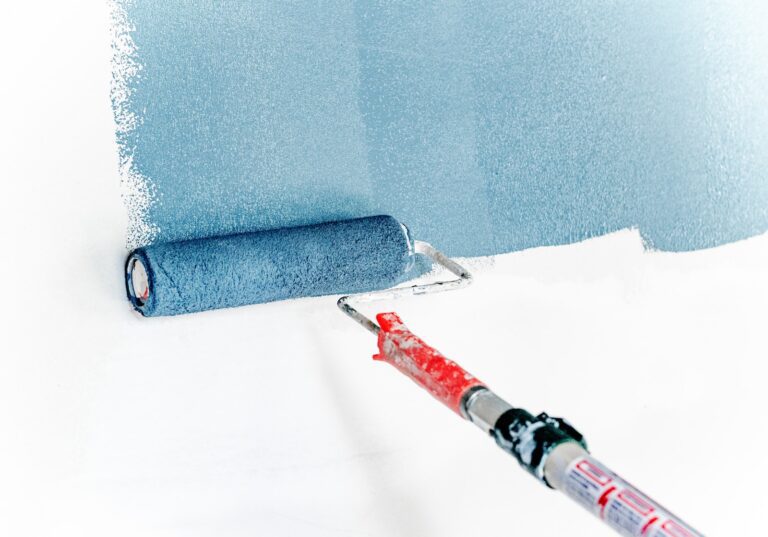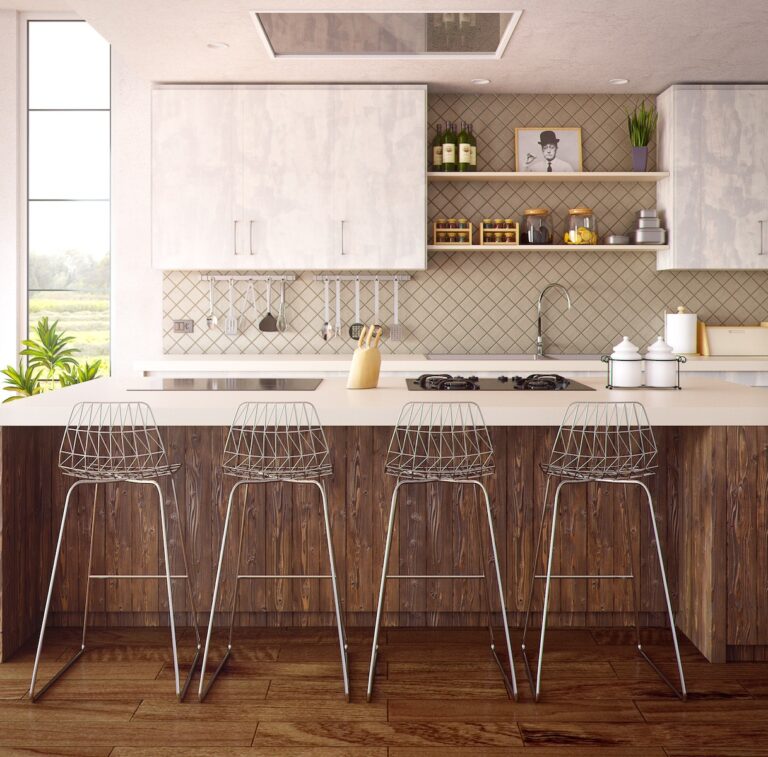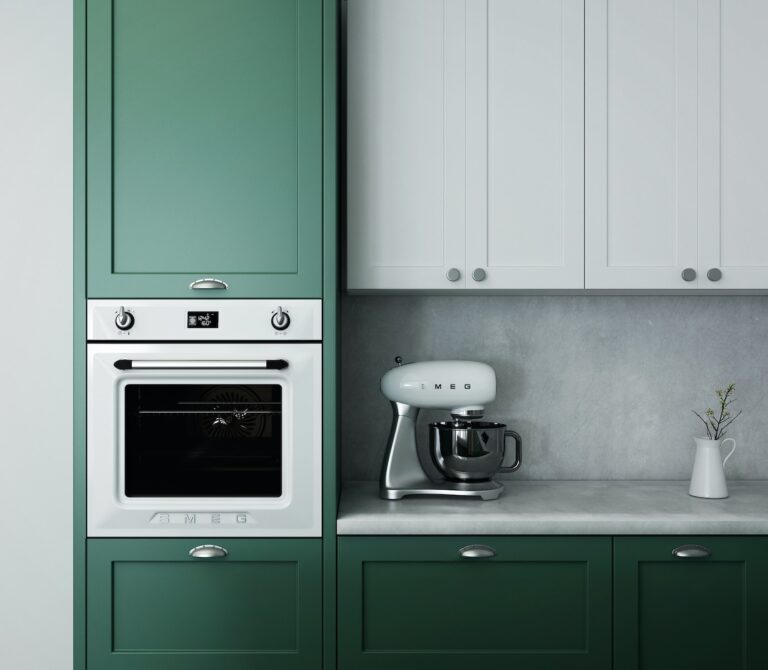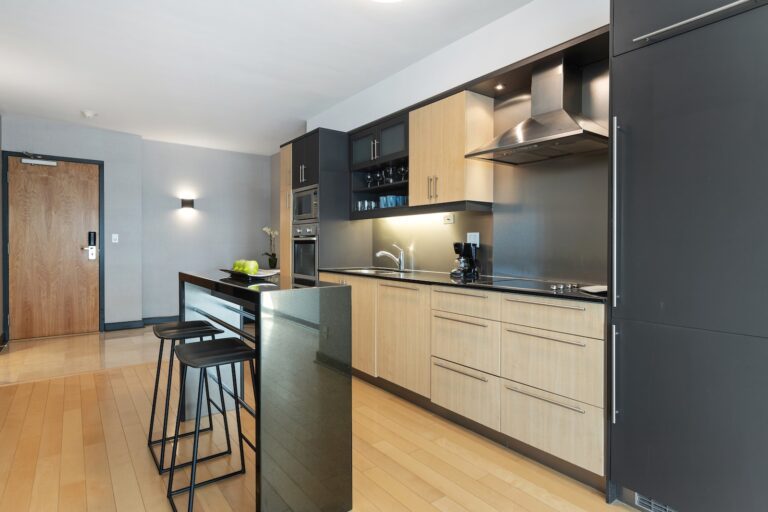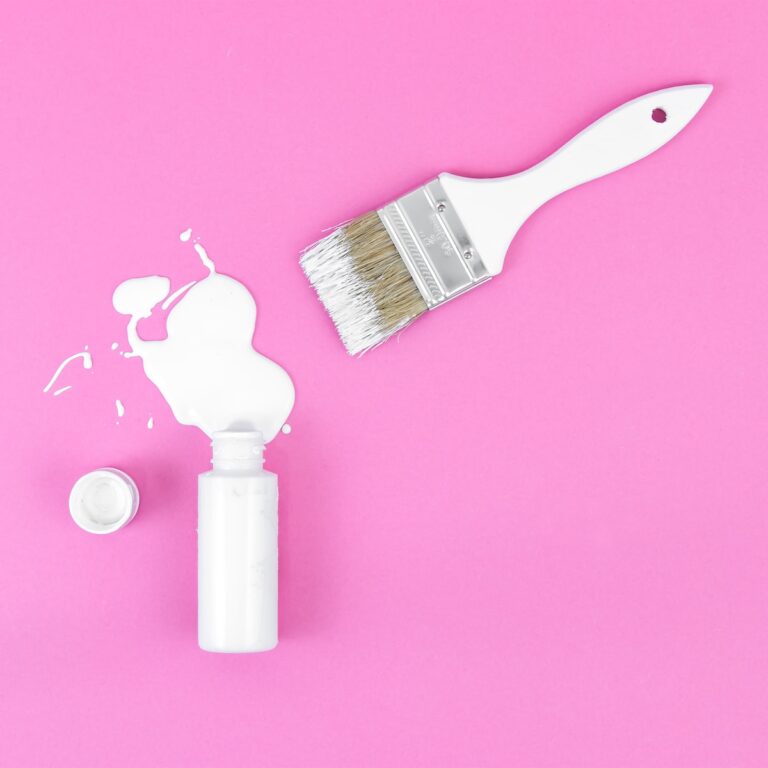How To Paint Your Kitchen Cabinets White?
Are you tired of your outdated kitchen cabinets but don’t have the budget to replace them? Consider painting them white! This simple DIY project can give your kitchen a fresh, modern look without breaking the bank. In this guide, we’ll walk you through the steps to achieve a flawless white finish on your cabinets. So grab your paintbrush and let’s get started!
If you want to give your kitchen a fresh and modern look, painting your cabinets white is a great way to do it. Here is a step-by-step tutorial on how to paint your kitchen cabinets white:
- Clean and sand your cabinets.
- Apply a primer to help the paint adhere.
- Paint the cabinets with a white paint of your choice.
- Let the cabinets dry completely before reattaching the hardware.
By following these simple steps, your kitchen cabinets will look brand new and bright in no time!
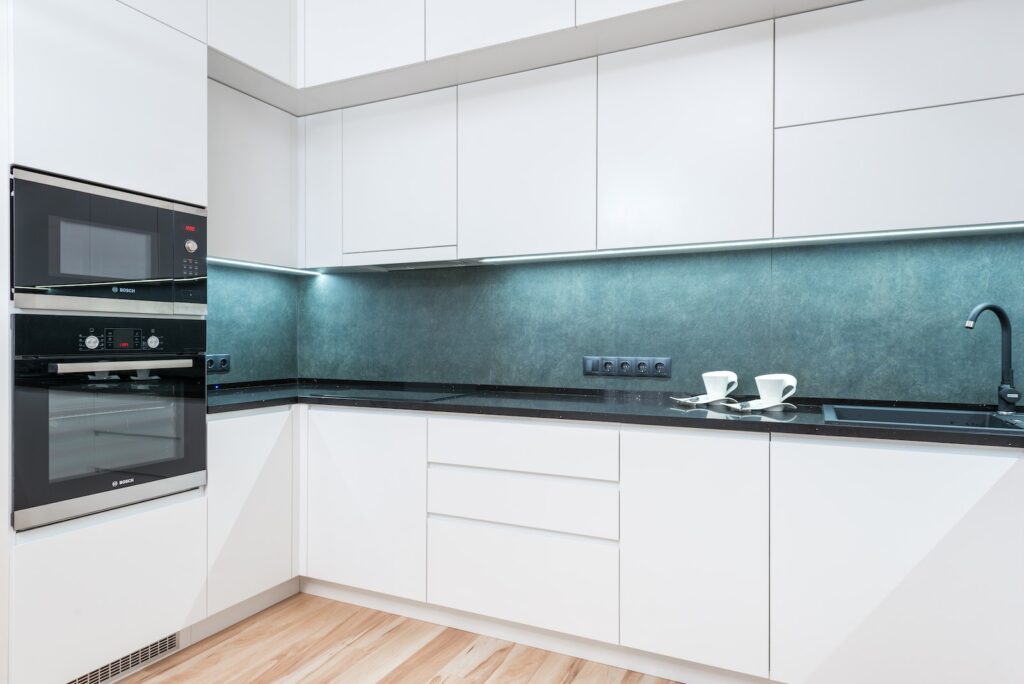
How to Paint Your Kitchen Cabinets White: Step-by-Step Guide
If you’re looking for a way to give your kitchen a fresh, new look without breaking the bank, painting your kitchen cabinets white is a great option. Not only will it brighten up your space, but it can also make your cabinets look brand new. In this article, we’ll go over the steps you need to take to paint your kitchen cabinets white.
Step 1: Prepare Your Kitchen Cabinets
The first step in painting your kitchen cabinets white is to prepare them for painting. This involves removing all the doors and drawers, as well as any hardware such as knobs and handles. Then, clean the cabinets thoroughly with soap and water and let them dry completely. Sand the surfaces lightly with fine-grit sandpaper to remove any gloss from the previous finish. After that, wipe the cabinets down with a tack cloth to remove any dust.
Next, tape off any areas that you don’t want to paint, such as the edges around the cabinets. Cover your countertops and floors with drop cloths to protect them from any paint drips or spills.
Step 2: Prime Your Kitchen Cabinets
Before you start painting your cabinets, it’s important to prime them first. This will help the paint adhere better and last longer. Apply a coat of primer to all surfaces of your kitchen cabinets, and let it dry completely according to the manufacturer’s instructions. This may take anywhere from a few hours to overnight.
Once the primer has dried, lightly sand the surfaces again with fine-grit sandpaper and wipe them down with a tack cloth.
Step 3: Paint Your Kitchen Cabinets White
Now that your kitchen cabinets are prepped and primed, it’s time to paint them white. Choose a high-quality paint that’s specifically designed for cabinets. You can use a brush, roller, or sprayer to apply the paint. Make sure to use long, even strokes and apply the paint thinly and evenly. Allow the first coat to dry according to the manufacturer’s instructions, and then apply a second coat if needed.
Once the second coat has dried, you can reattach the doors and drawers and reinstall any hardware.
Step 4: Seal Your Kitchen Cabinets
After your kitchen cabinets are painted white, you’ll want to seal them to protect the paint and make them easier to clean. You can use a clear coat sealer or a wax finish. Apply the sealer or wax thinly and evenly, and let it dry completely according to the manufacturer’s instructions.
Now that your kitchen cabinets are painted white, you can enjoy your bright, new space!
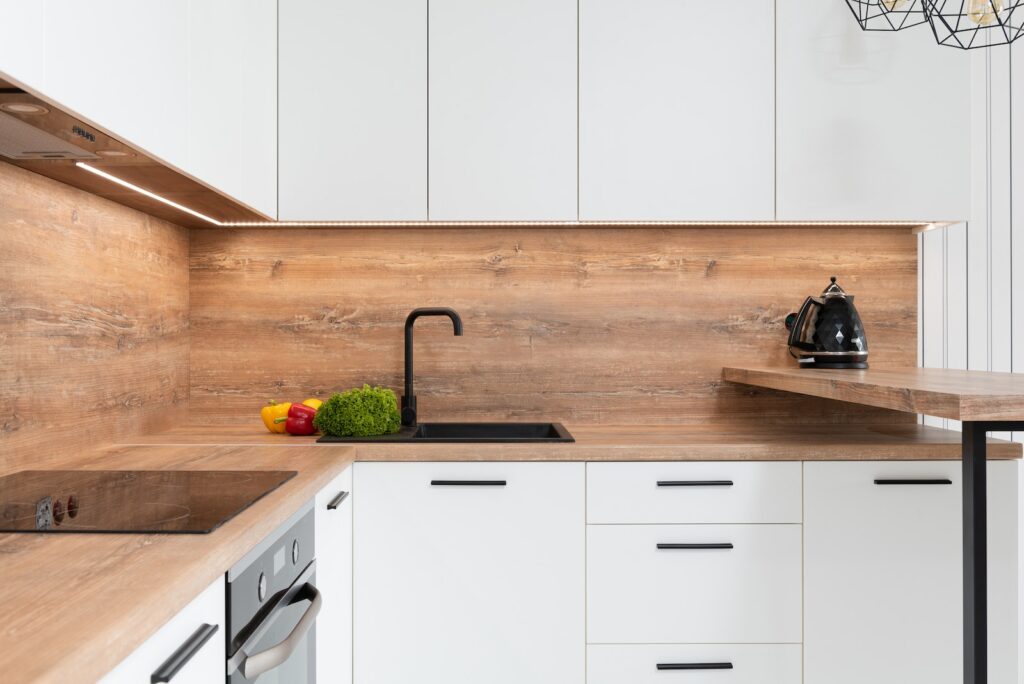
Benefits of Painting Your Kitchen Cabinets White
Painting your kitchen cabinets white has many benefits. Here are a few:
- It brightens up your space and makes it feel larger.
- It’s an affordable way to update your kitchen without doing a complete remodel.
- White cabinets are timeless and classic.
- Painting your cabinets can increase the value of your home.
Painting Your Kitchen Cabinets White vs. Other Colors
While white cabinets are a popular choice, there are many other colors you can choose from. Here are some pros and cons of painting your cabinets white vs. other colors:
| White Cabinets | Colored Cabinets |
|---|---|
Pros:
|
Pros:
|
Cons:
|
Cons:
|
Tips for Painting Your Kitchen Cabinets White
Here are some tips to make your cabinet painting project go smoothly:
- Choose a high-quality paint specifically designed for cabinets.
- Take your time and allow each coat to dry completely before applying the next.
- Use long, even strokes to apply the paint.
- Protect your floors and countertops with drop cloths.
- Remove all hardware before painting.
- Use a tack cloth to remove any dust before painting.
- Consider hiring a professional if you’re not comfortable painting your cabinets yourself.
With these tips in mind, you’ll be able to paint your kitchen cabinets white like a pro!
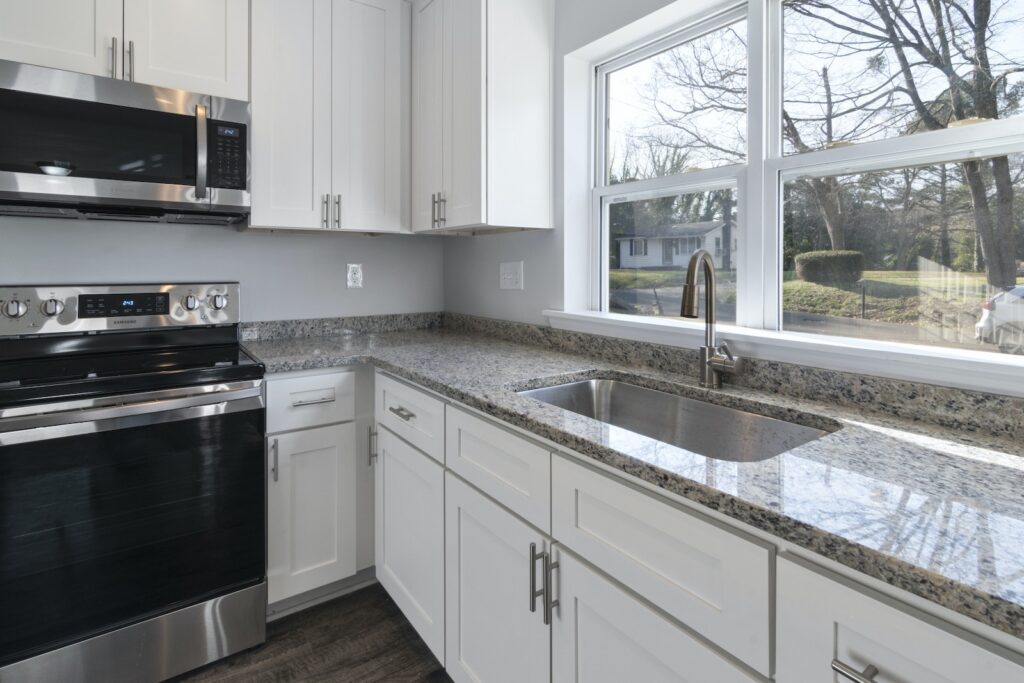
Frequently Asked Questions
Painting your kitchen cabinets white is a great way to refresh your kitchen without spending a lot of money. However, it can be a daunting task if you’re not sure where to start. Here are some commonly asked questions about painting kitchen cabinets white.
What supplies do I need to paint my kitchen cabinets white?
To paint your kitchen cabinets white, you’ll need the following supplies:
– Sandpaper
– Tack cloth
– Painter’s tape
– Primer
– Paint (preferably oil-based for durability)
– Paint brushes and/or rollers
– Drop cloths or old sheets to protect your floors and countertops
Do I need to remove the cabinet doors to paint them?
It’s up to you whether or not you want to remove the cabinet doors before painting them. Removing the doors will make it easier to paint them, but it’s not necessary. If you choose to leave the doors on, be sure to use painter’s tape to protect the hinges and any other hardware from getting paint on them.
Whether or not you remove the doors, be sure to thoroughly clean and sand the surfaces you’ll be painting to ensure a smooth and even finish.
What’s the best way to prep my cabinets for painting?
Before painting your cabinets white, it’s important to properly prep them. Here are the steps you should follow:
1. Remove all hardware, including knobs, handles, and hinges.
2. Clean the surfaces you’ll be painting with a mild detergent and warm water.
3. Sand the surfaces with a fine-grit sandpaper to rough up the surface and ensure the primer and paint will adhere properly.
4. Wipe down the surfaces with a tack cloth to remove any dust or debris.
5. Use painter’s tape to protect any areas you don’t want painted, such as the countertops or walls.
What type of primer should I use?
For the best results when painting your kitchen cabinets white, use a primer specifically designed for use on cabinets. This will ensure that the paint adheres properly and that the finish is smooth and even. Look for a primer that is oil-based, as this will provide the best durability and moisture resistance.
Be sure to follow the manufacturer’s instructions for applying the primer, and allow it to dry completely before painting.
How many coats of paint should I apply?
The number of coats of paint you’ll need to apply will depend on a variety of factors, such as the type of paint you’re using and the color of your cabinets. In general, you’ll need at least two coats of paint to achieve a smooth, even finish.
Be sure to allow each coat of paint to dry completely before applying the next one. This will help prevent drips or other imperfections in the finish.

In conclusion, painting your kitchen cabinets white is an effective way to give your kitchen a fresh, modern look. With the right tools and techniques, you can achieve professional-looking results that will enhance the overall aesthetic of your space.
Firstly, it’s essential to prep your cabinets by cleaning and sanding them properly. This step will ensure that the paint adheres correctly and will help to prolong the life of your newly painted cabinets.
Next, choosing the right type of paint is crucial. Opting for a high-quality, durable paint will ensure that your cabinets look great for years to come. Additionally, using a primer before painting will help create a smooth, even surface.
Lastly, taking the time to apply several thin coats of paint will result in a more professional-looking finish. Patience is key, so don’t rush the process. By following these steps, you can transform your kitchen cabinets and create a beautiful, bright space that you’ll love spending time in.

